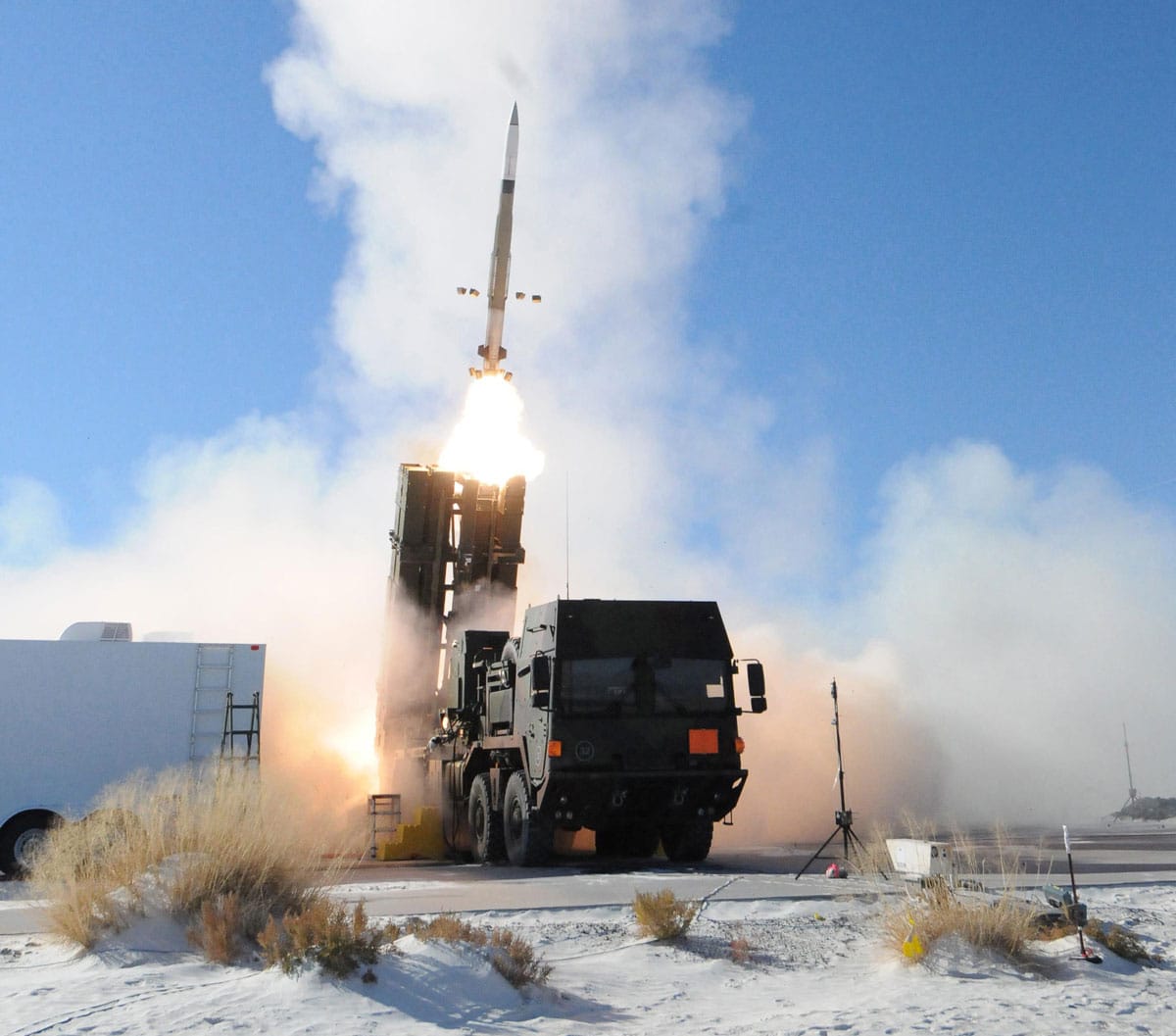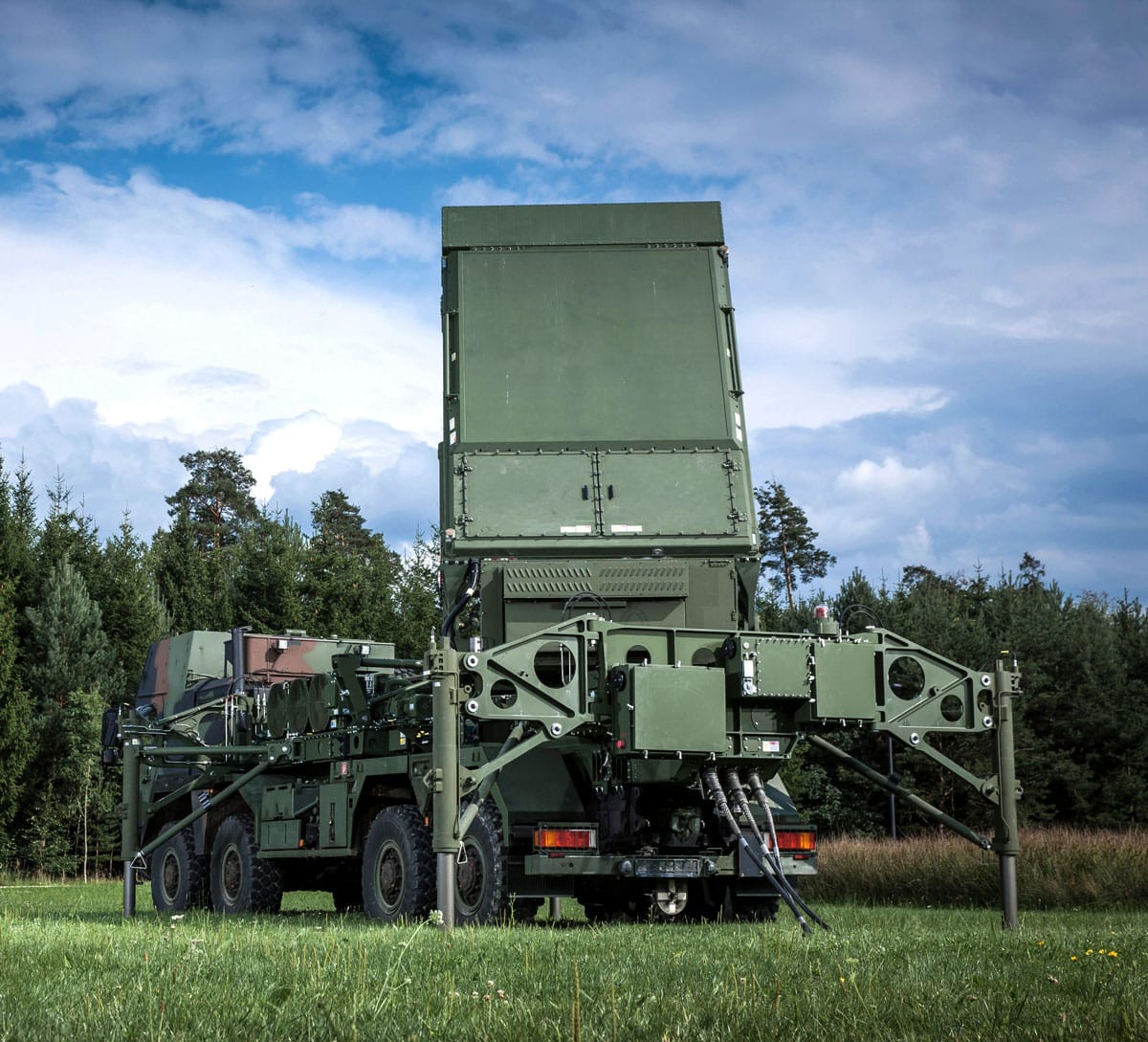
The Medium Extended Air Defense System (MEADS) is a joint missile defense project of the United States, Germany, and Italy originally designed to replace the Patriot system. The program was tasked to bridge the gap between smaller surface-to-air systems like the Stinger missile, and higher levels of the missile defense, such as the Terminal High Altitude Defense System (THAAD). It is designed to intercept short-ranged ballistic missiles, cruise missiles, and other atmospheric threats.
The system’s six major equipment items are: Multifunction Fire Control Radar (MCFR); UHF Surveillance Radar; Battle Management, Command, Control, Communications, Computers, and Intelligence (BMC4I) Tactical Operations Center; Certified Missile Round (PAC-3 MSE and canister); Launcher; and Reloader.1
MEADS Program History
The project began in the late 1980s and early 1990s when the U.S. Army and Marine Corps created the Corps SAM program to replace the Hawk Air Defense System that had been in service since the 1960s. In 1995, Corps SAM was renamed MEADS and became a multinational partnership. Participating companies include Lockheed Martin (U.S) and MBDA (Italy and Germany). In September 2004, MEADS International (MI) received a nine-year, $3.4 billion Design and Development letter contract. The contract award followed a series of successful system demonstrations and signing of a memorandum of understanding between the United States and Italy. Germany signed the agreement following parliamentary action in April 2005.2
In March 2013, Congress announced a continuing resolution that provided $381 million to finish development of the system, but later decided not to procure it due to spending caps.3
In 2015, Germany decided to procure MEADS for its missile defense upgrades instead of purchasing upgrades to its existing Patriot systems, reigniting debates about the future of NATO’s terminal missile defense system of choice.4
Media reports indicated that Germany will formally contract to acquire the system sometime in 2017.5
Specifications

MEADS uses the new Patriot Advanced Capability-3 (PAC-3) Missile Segment Enhancement (MSE) missiles to target tactical ballistic missiles, low and high altitude cruise missiles, aircraft, and unmanned aerial vehicles. The German deployment of the system will also include IRIS-T short-range missiles to engage air-breathing threats.6
Additionally, the radars provide 360-degree coverage and can roll off transport vehicles ready for combat. 7 Each launcher is capable of holding multiple PAC-3 MSE with each fire unit carrying 48 ready MSE interceptors mounted on a wheeled vehicle. In a combat zone, the mobile radars and launchers are intended to be able to keep pace with fast moving ground forces.8
The system employs two radar types, and UHF radar for surveillance and tracking, and a Multi-Function Fire Control Radar (MFCR). Both radars are pulse-Doppler and employ active phased-array antennas. The MFCR is an X-band, solid-state, phased array radar using element-level transmit/receive modules. It provides precision tracking and wideband discrimination and classification capabilities. The MFCR uses its main beam for uplink and downlink missile communications. An advanced Mode 5 identify friend-or-foe subsystem supports improved threat identification and typing. 9
Testing
In late 2003, MEADS successfully demonstrated an ability to detect, track, and destroy simulated aircraft and missile targets in a test at Lockheed Martin’s facilities in Syracuse, New York. In November 2012, the MEADS system detected, tracked, intercepted, and destroyed an air-breathing target in an intercept flight test at White Sands Missile Range, New Mexico. The test configuration included a networked battle manager, lightweight launcher firing a PAC-3 MSE Certified Missile Round, and a 360-degree MCFR, which tracked the MQM-107 target and guided the missile to a successful intercept. The test displayed the system’s capability for full-perimeter, 360-degree defense with the PAC-3 MSE missile performing a unique “over-the-shoulder maneuver” to defeat the target attacking from behind the emplacement.10
In November 2013, MEADS successfully intercepted two targets coming from opposite directions simultaneously.11
Footnotes
- Christopher F. Foss and O’Halloran, James C. IHS Jane’s Land Warfare Platforms: Artillery and Air Defense, 2012-2013. P. 459-61.
- “Germany Approves Nine-Year MEADS Design and Development Program,” Defense-Aerospace, April 20, 2005, http://www.defense-aerospace.com/articles-view/release/3/55842/germany-approves-meads-d%26d-program-(apr.-21).html.
- “Stop-gap spending measure funds MEADS missile defense,” Reuters, March 25, 2013, http://www.reuters.com/article/us-lockheed-missiles-idUSBRE92O02F20130325.
- Jen Judson, “Lockheed, MBDA See NATO Future for MEADS,” Defense News, September 18, 2015, http://www.defensenews.com/story/defense/show-daily/dsei/2015/09/18/lockheed-mbda-see-nato-future-meads/72390236/.
- Jen Judson, “MEADS Team Looking Toward Contract With Germany in Early 2017,” Defense News, October 11, 2016. http://www.defensenews.com/articles/meads-team-looking-toward-contract-with-germany-in-early-2017.
- Tony Osborne, “Germany Selects MEADS Over Patriot,” Aviation Week, June 15, 2015, http://aviationweek.com/paris-air-show-2015/germany-selects-meads-over-patriot.
- Foss and O’Halloran.
- Ibid.
- Ibid.
- “MEADS Successfully Intercepts Air-Breathing Target at White Sands Missile Range,” Lockheed Martin Press Release, November 29, 2012, http://www.lockheedmartin.com/us/news/press-releases/2012/november/mfc-12912-Meads-successfully-intercepts.html.
- Mike Gruss, “MEADS Destroys Two Targets from Opposite Directions as U.S. Bows Out,” Space News, November 8, 2013, http://spacenews.com/38058meads-destroys-two-targets-from-opposite-directions-as-us-bows-out/#sthash.pB4ZGKkj.dpuf.